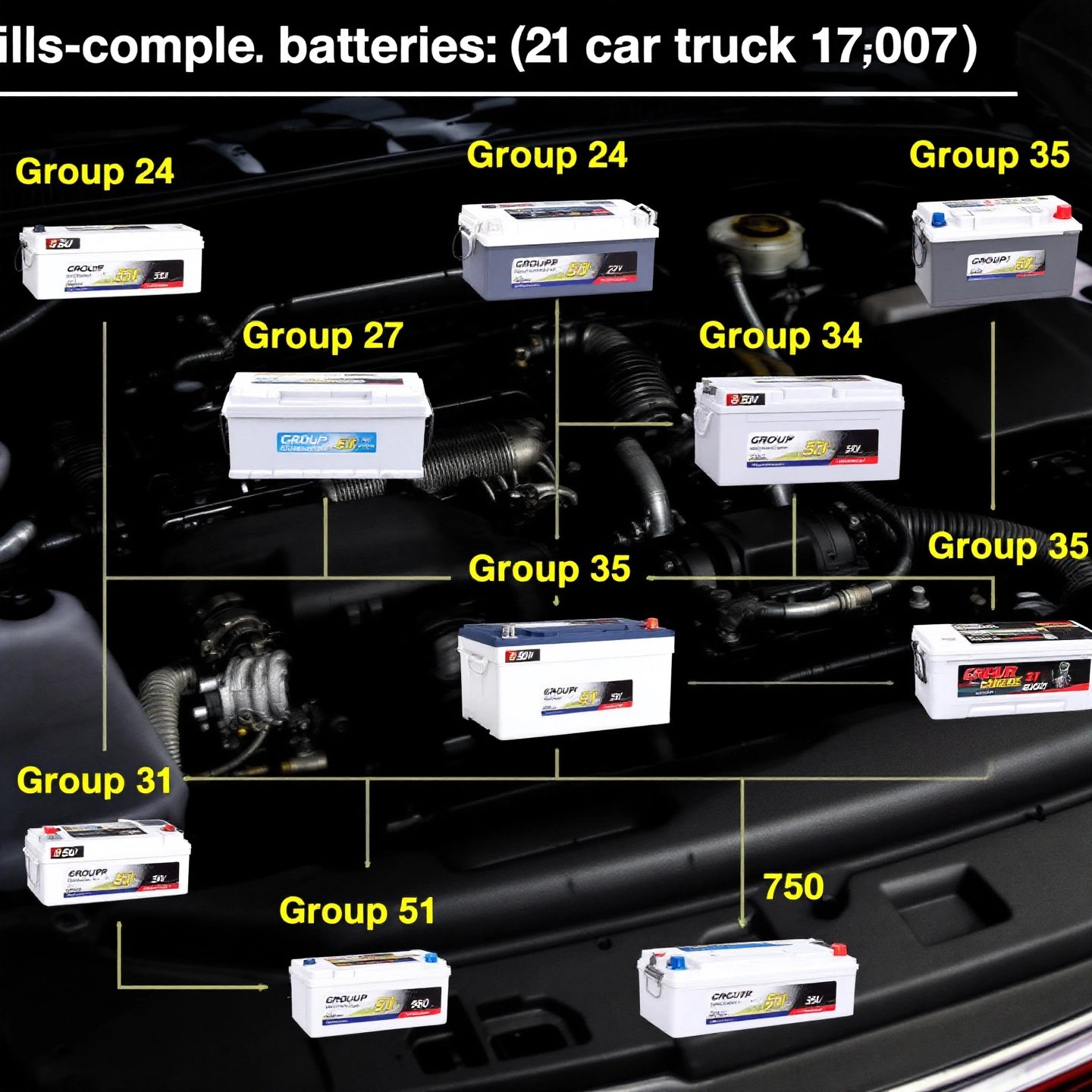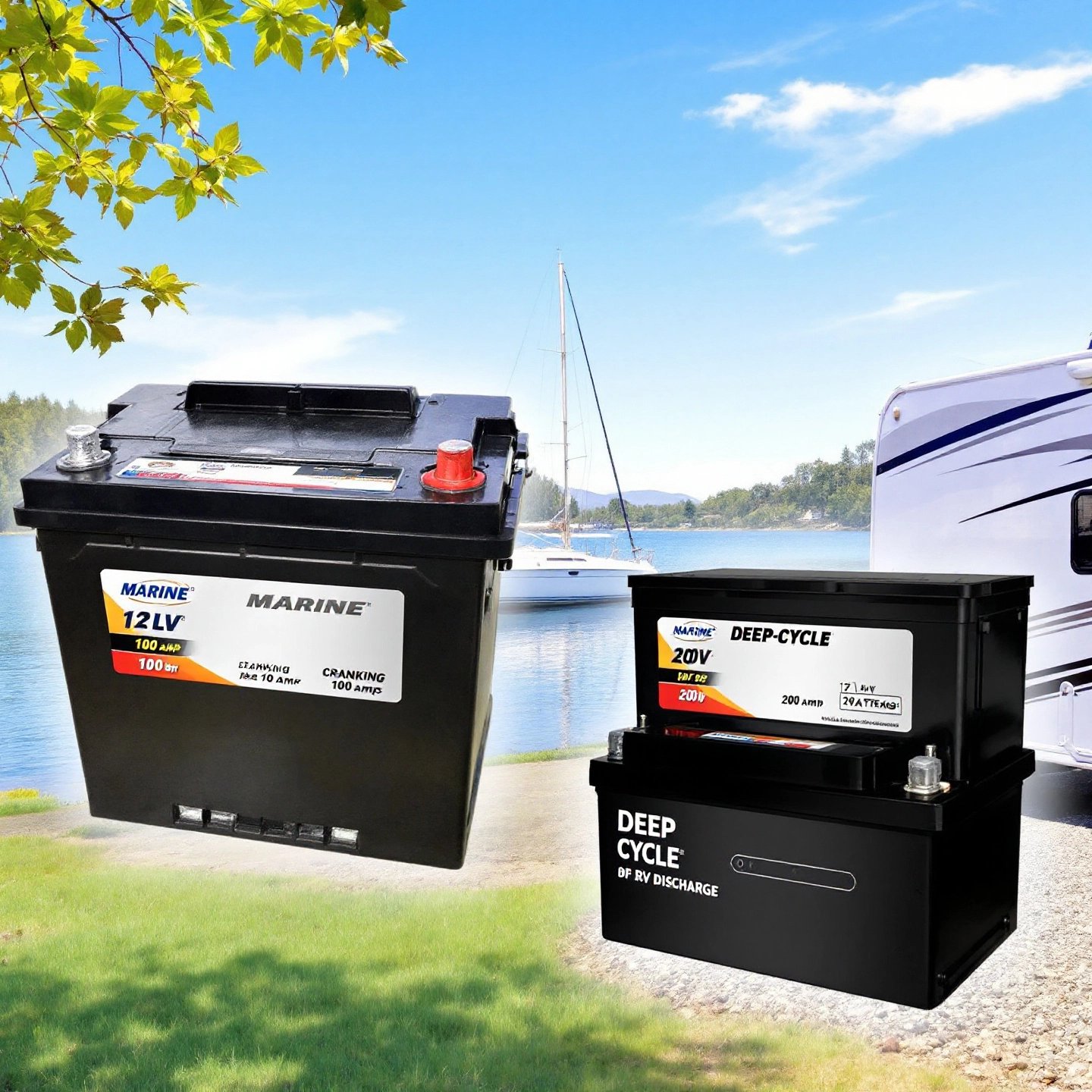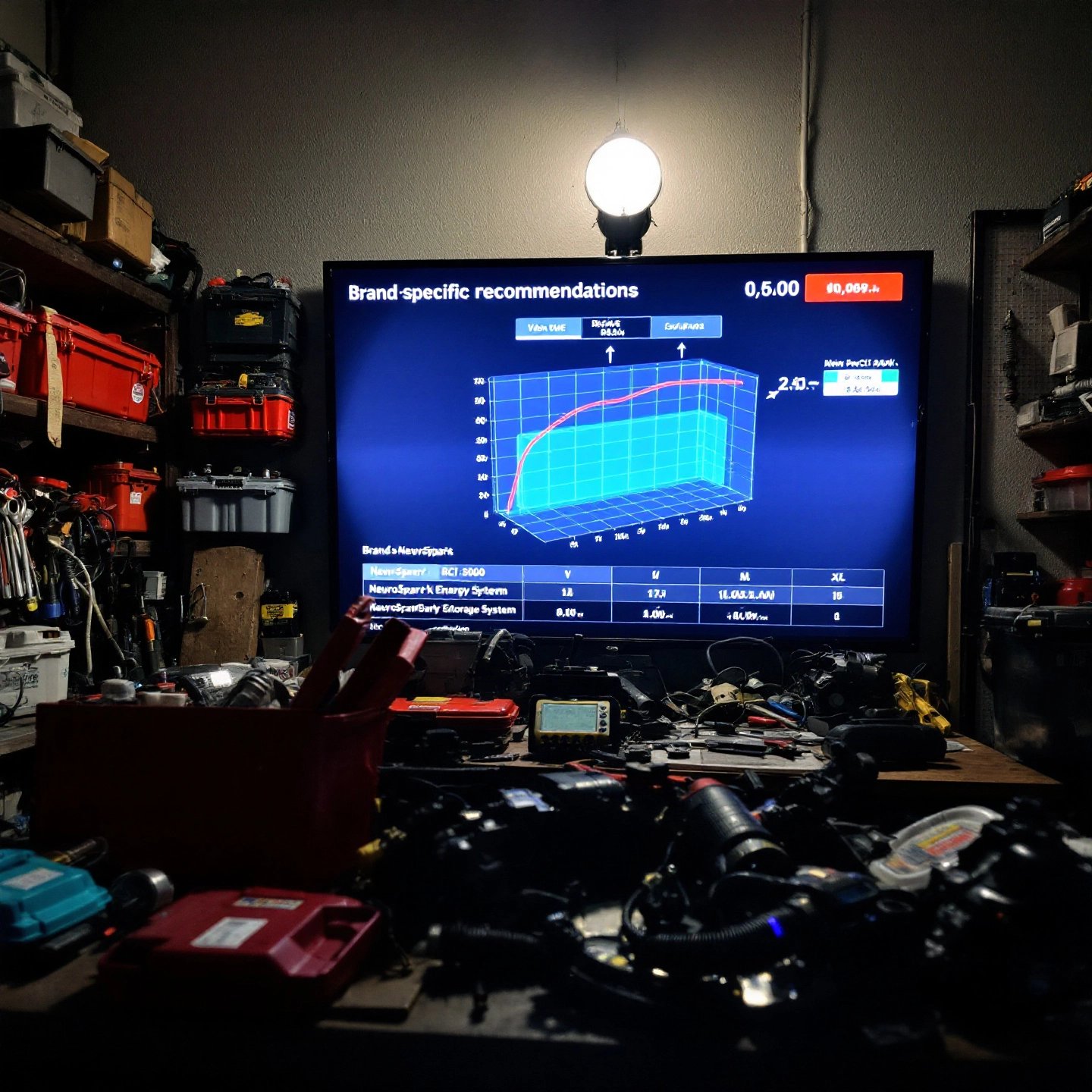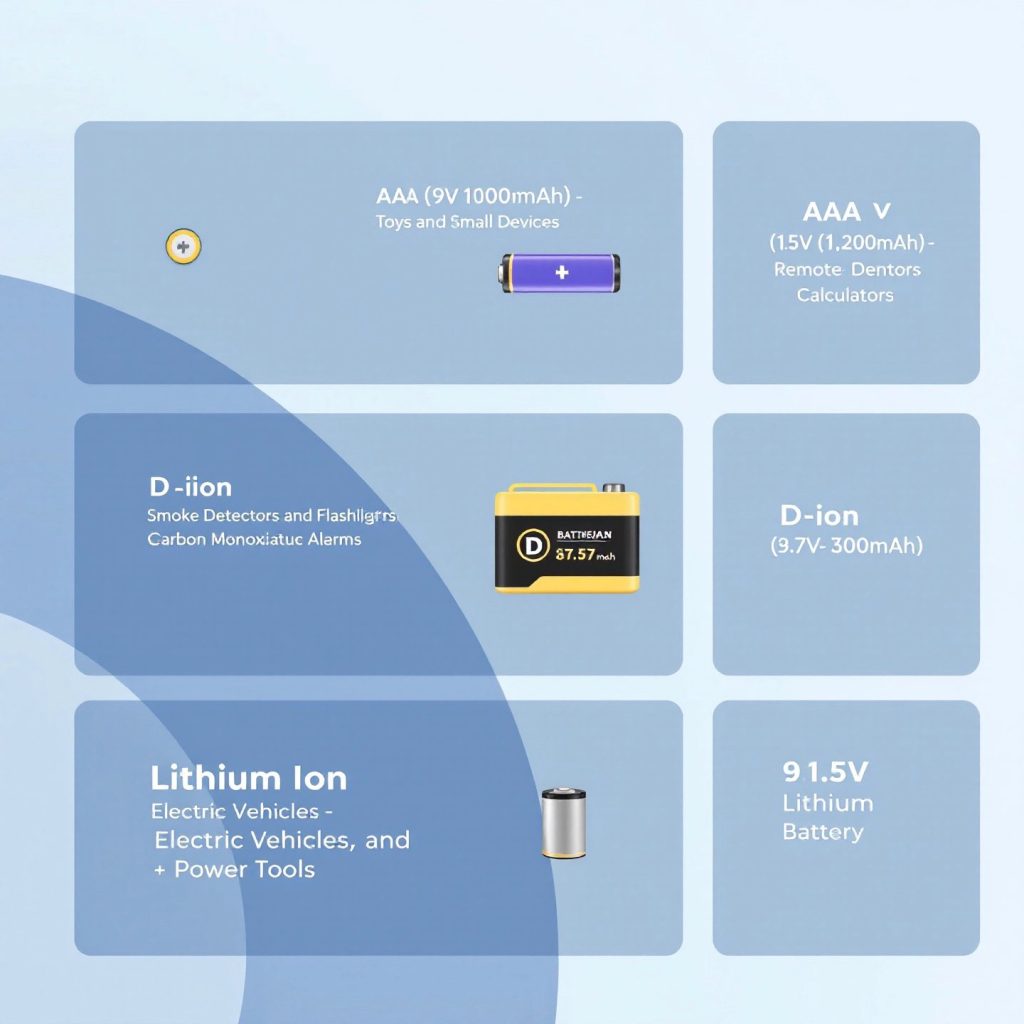Introduction to Battery Size Chart
Have you ever wondered why your car struggles to start on a chilly morning, or why your electronic gadgets run out of juice faster than expected? The answer might lie in the battery size chart. This essential tool helps you select the correct battery for various applications, ensuring optimal performance, longevity, and safety. By understanding the importance of battery size, you can avoid common pitfalls that lead to inefficient power usage and potential damage.
A battery size chart categorizes batteries based on their dimensions, capacity, and terminal configurations. These specifications are crucial because the right battery size ensures a snug fit in your device or vehicle, providing the necessary power without overloading the system. Imagine trying to fit a square peg in a round hole—choosing the wrong battery size can lead to similar issues, like poor connections and accelerated wear and tear.
In this article, we will delve into detailed breakdowns of battery size charts for various applications, including automotive, marine, RV, lawn mower, and small electronics. You’ll discover how selecting the right battery impacts not only the performance of your vehicle or device but also its safety and longevity. By the end, you’ll have a comprehensive understanding of why battery size matters and how to make informed decisions using a battery size chart.
Let’s embark on this journey to empower your knowledge about battery size charts and their critical role in everyday applications.
Understanding Battery Group Size Fundamentals
When it comes to selecting the right battery, understanding battery group size is fundamental. But what exactly is a battery group size? Imagine it as a standardized label that tells you the dimensions, terminal arrangement, and specific features of a battery. This standardization helps ensure that a battery fits perfectly into its designated slot, whether in your car, boat, or lawn equipment.
The Battery Council International (BCI) sets these specifications. The BCI battery specifications are crucial for manufacturers, retailers, and consumers alike. By adhering to these standards, manufacturers can produce batteries that fit a wide range of vehicles and devices, while retailers can easily recommend the right battery for your needs. For instance, a Group 24 battery will have specific dimensions that differ from a Group 27, ensuring that each battery fits its intended application without hassle.
Why is this important? Knowing the correct battery group size ensures compatibility and optimal performance. A battery that’s too small might not provide enough power, while one that’s too large could cause fitment issues or even damage the equipment. Proper fit also minimizes the risk of terminal misalignment, which can lead to electrical failures.
In summary, understanding battery group sizes is not just about fitting a battery into a space. It’s about ensuring safety, maximizing performance, and enhancing the longevity of your battery-powered devices. So, next time you’re in the market for a battery, remember to check the group size for a seamless fit and optimal functionality.

Exploring Car and Truck Battery Size Charts
Have you ever wondered why your car’s battery doesn’t seem to last as long in cold weather, or why your truck struggles to start when packed with electronics? These issues often boil down to selecting the right battery size, which is where a car battery size chart becomes invaluable. Understanding the nuances of automotive battery sizes can significantly impact your vehicle’s performance and reliability.
Automotive batteries are categorized by group sizes, which dictate their physical dimensions, terminal positions, and power capacities. The Battery Council International (BCI) provides a comprehensive system to identify these sizes, ensuring compatibility across various makes and models. For instance, a Group 35 battery might be ideal for a compact sedan, while a Group 65 battery could be more suitable for a larger SUV or truck.
Factors Influencing Battery Selection
Several factors influence the selection of the right battery for your car or truck:
- Temperature: Cold temperatures can reduce a battery’s efficiency. Therefore, a higher Cold Cranking Amps (CCA) rating is essential for vehicles in colder climates to ensure reliable starts.
- Engine Size: Larger engines require batteries with higher power outputs to turn over the engine effectively.
- Vehicle Electronics: Modern vehicles are equipped with numerous electronic systems, from infotainment to advanced driver-assistance systems, which demand more from a battery.
To help you make an informed choice, here’s a simplified table showcasing some common group sizes, their typical CCA, and voltage requirements:
| Group Size | Typical CCA | Voltage | Common Vehicles |
|---|---|---|---|
| Group 24 | 500-700 | 12V | Compact Cars |
| Group 35 | 600-850 | 12V | Sedans, Small SUVs |
| Group 65 | 750-950 | 12V | Trucks, Large SUVs |
By consulting a truck battery group sizes chart, you can ensure that your battery meets the specific needs of your vehicle, providing optimal performance and longevity. Remember, the right battery is not just about fitting into the battery tray; it’s about supporting your vehicle’s entire electrical ecosystem effectively.
As you continue to explore battery options, consider how each factor plays into your specific driving conditions and vehicle requirements. Up next, we’ll delve into the unique needs of motorcycles and powersport vehicles, where battery selection is equally crucial.
Choosing the Right Motorcycle and Powersport Battery
When it comes to selecting a battery for motorcycles and powersport vehicles, understanding the variability in motorcycle battery size is crucial. These batteries can vary significantly based on factors such as engine displacement and the number of accessories installed. For instance, a high-performance bike with multiple electronic gadgets will demand a more robust battery compared to a standard model with minimal accessories.
One critical aspect to consider is the correct terminal orientation and mounting. Imagine trying to connect a battery with terminals that don’t align with your vehicle’s cables—frustrating, right? Ensuring that the terminal orientation matches your motorcycle’s design is essential for seamless installation and operation. Proper mounting also plays a role in securing the battery, preventing it from shifting during rides, which could lead to disconnections or damage.
Advantages of AGM and Lithium-Ion Technologies
When exploring powersport battery types, two technologies often stand out: Absorbed Glass Mat (AGM) and lithium-ion. AGM batteries are known for their durability and resistance to vibration, making them ideal for the rugged conditions faced by motorcycles and ATVs. They are also spill-proof and require minimal maintenance, which is a significant advantage for riders who prefer a hassle-free experience.
On the other hand, lithium-ion batteries offer a lightweight alternative with higher energy density. This means they can provide more starting power, which is particularly beneficial for high-performance motorcycles. However, it’s essential to consider the environment in which you’ll be riding. AGM batteries tend to perform better in extreme temperatures, both hot and cold, whereas lithium-ion batteries might struggle in such conditions.
Ultimately, choosing the right battery involves balancing these factors against your specific needs and riding habits. By understanding the nuances of motorcycle and powersport batteries, you can ensure reliable performance and longevity for your vehicle. As we move forward, let’s shift gears and explore the distinct requirements for marine and RV batteries, where the choice between cranking and deep-cycle options becomes pivotal.

Decoding Marine and RV Battery Size Requirements
When it comes to powering your adventures on water or road, understanding the intricacies of marine battery size and RV battery requirements is crucial. These batteries are not one-size-fits-all; they are designed to meet the specific demands of their environments. Imagine setting off on a cross-country RV trip or a day at sea, only to find your battery can’t keep up—frustrating, right? Knowing the right battery type can save you from such hassles.
Cranking vs. Deep-Cycle Batteries
Marine and RV batteries generally fall into two categories: cranking (starting) and deep-cycle. Cranking batteries deliver a quick burst of energy to start engines, making them ideal for marine applications where the engine needs to be fired up quickly. On the other hand, deep-cycle batteries are designed to provide a steady amount of power over a longer period, which is perfect for RVs that need to power appliances and electronics while parked.
The construction of these batteries also reflects their use. Marine batteries are built to withstand the jostling and moisture of a boat environment, often featuring corrosion-resistant materials. RV batteries, while robust, are optimized for stable environments and extended use, often incorporating technologies like AGM or lithium for maintenance-free operation.
Amp-Hour Ratings and Voltage Needs
Amp-hour (Ah) ratings are critical in determining how long a battery can power your devices. For instance, a battery rated at 100 Ah can theoretically deliver 5 amps of current for 20 hours. However, it’s important to avoid fully discharging these batteries to prolong their lifespan. Voltage requirements also play a role; most marine and RV systems require 12V batteries, but the specific needs can vary based on the equipment being powered.
When planning your power setup, consider a load analysis to understand your total energy needs. This helps in selecting a battery bank that can handle your demands, ensuring you have enough power for essential and non-essential devices alike.
Eco-Friendly Power Solutions
For those looking to minimize their environmental impact, integrating solar panels into your RV setup is a smart choice. Renewable Energy Nexus offers a range of solar panel options that can complement your battery system, providing sustainable energy while reducing reliance on traditional power sources. Whether you’re enjoying a peaceful day on the water or camping in a remote location, solar panels can keep your batteries charged and your adventures uninterrupted.
By understanding the specific requirements of marine and RV batteries, you can ensure reliable power for your journeys. As we move forward, let’s explore how proper battery maintenance can extend the life of your lawn mower and tractor batteries, ensuring they are ready when you need them most.
Maintaining Lawn Mower and Tractor Battery Efficiency
When it comes to keeping your lawn mowers and tractors in top shape, the significance of choosing the right lawn mower battery size cannot be overstated. A properly sized battery ensures that your equipment runs efficiently, providing the power needed to tackle your outdoor tasks without interruption. But how do you ensure that your batteries remain in optimal condition, especially during off-seasons or colder months?
Importance of Proper Battery Sizing
Imagine trying to start your lawn mower or tractor, only to find that the battery can’t deliver the necessary power. Selecting the correct battery size is crucial for avoiding such scenarios. A battery that is too small may not provide sufficient power, while an oversized battery can lead to fitment issues and unnecessary strain on the electrical system. Proper sizing ensures that your battery delivers consistent performance, reducing the risk of unexpected breakdowns.
Storage Tips for Longevity
To extend the life of your battery, especially during the winter months when your equipment might not be in use, consider these storage tips:
- Charge Before Storage: Ensure your battery is fully charged before storing. Batteries below a 70% charge can struggle to start engines, particularly in cold weather (source).
- Cool, Dry Storage: Store your battery in a cool, dry place, avoiding extreme temperatures that can accelerate discharge or cause damage.
- Disconnect Cables: Disconnect the negative ground cable to reduce discharge caused by electrical components. Reconnect before the next use.
- Regular Checks: Check the battery charge every few months to ensure it hasn’t dropped significantly. This helps prevent sulfation, which can reduce the battery’s ability to hold a charge.
Trickle Charging and Weather Considerations
For those who want to ensure their batteries are always ready, using a trickle charger or battery tender can be beneficial. These devices maintain a full charge without overcharging, which is crucial for battery health. Additionally, weather conditions can significantly affect battery performance. Cold weather, in particular, can slow down the chemical reactions within a battery, reducing its efficiency (source).
By following these guidelines, you can enhance the longevity and reliability of your lawn mower and tractor batteries, ensuring they are ready to perform when you need them most. As we move forward, let’s delve into the world of button cell batteries, exploring their unique applications and the importance of matching the exact size and chemistry for replacements.

Comparing Watch and Button Cell Battery Options
When it comes to powering small electronic devices like watches, hearing aids, and remote controls, understanding button cell battery types is essential. These compact power sources are designed to fit snugly into small compartments, providing the necessary energy without taking up much space. But with so many options available, how do you choose the right one?
Button cells come in various chemistries, including alkaline, silver oxide, and lithium, each offering distinct advantages. Alkaline batteries are cost-effective but typically offer less capacity and voltage stability compared to silver oxide or lithium options. Silver oxide batteries, on the other hand, provide a stable voltage output until they suddenly deplete, making them ideal for precision devices like watches, where consistent performance is crucial (source).
Matching Size and Chemistry
Imagine replacing a watch battery only to find it doesn’t fit or doesn’t power the device correctly. This situation underscores the importance of matching both the size and chemistry of the replacement battery. The International Electrotechnical Commission (IEC) has standardized the coding for these batteries, indicating their size and chemical composition, which can help in selecting the correct replacement (source).
For instance, a watch requiring a silver oxide SR626SW should not be replaced with an alkaline AG4, even if they appear to be the same size. The voltage and discharge characteristics differ, which can affect the performance and longevity of your device. Always check the manufacturer’s specifications and use a cross-reference chart to ensure compatibility.
By understanding the nuances of button cell batteries, you can ensure your devices run smoothly and efficiently. Next, we’ll explore how cable and terminal sizes impact battery efficiency and compatibility, ensuring you make informed decisions for your battery needs.
Identifying Key Differences in Cable and Terminal Sizes
When dealing with batteries, the size and type of cables and terminals play a crucial role in ensuring efficient power transfer and system compatibility. Understanding battery cable sizes and terminal types can significantly impact the performance and safety of your electrical systems.
The Impact of Cable Gauge on Current Flow
Think of battery cables as the arteries of an electrical system. The gauge of the cable, which refers to its thickness, directly affects how efficiently electricity flows. Larger cables have lower resistance and reduced voltage drop, which means more power reaches your devices. This is particularly important in high-demand systems, such as those in vehicles or solar installations, where efficient power transfer is critical.
For example, using a cable that’s too thin for the current load can lead to overheating, energy loss, and even potential fire hazards. Conversely, a thicker cable reduces resistance and energy loss, ensuring that your battery’s power is utilized effectively. A battery cable size chart can help you determine the appropriate gauge for your specific application, balancing safety and efficiency.
Understanding Terminal Types and Compatibility
Just as important as the cable size is the type of terminal used to connect the battery to the system. Terminals come in various designs, such as ring, spade, and quick-disconnect, each suited for different applications. Ensuring compatibility between the terminal and the connector is vital for a secure and reliable connection.
Imagine trying to fit a square peg into a round hole; mismatched terminals can lead to loose connections, increased resistance, and potential electrical failures. To avoid this, check the manufacturer’s specifications and use a compatibility guide or consult resources like this guide to ensure the correct fit for your setup.
By understanding the nuances of cable gauges and terminal types, you can optimize the performance and safety of your battery-powered systems. This knowledge is essential whether you’re setting up a new system or maintaining an existing one, ensuring that every component works harmoniously. As we continue, let’s explore how leveraging BCI and brand-specific charts can further enhance your battery selection process.

Leveraging BCI and Brand-Specific Charts for Best Results
When it comes to selecting the right battery for your vehicle or device, referencing BCI battery charts can be a game-changer. These charts provide a standardized framework that simplifies the process of finding the perfect fit for your battery needs, ensuring compatibility and optimal performance.
The Role of BCI Battery Charts
BCI (Battery Council International) charts categorize batteries based on their group sizes, which include dimensions, terminal arrangements, and special features. This standardization is crucial for ensuring that a battery fits perfectly into its designated slot, whether in a car, truck, or any other application. By consulting these charts, you can avoid the pitfalls of mismatched batteries, such as poor connectivity or insufficient power output.
For example, if you’re replacing a car battery, the BCI chart will help you identify the correct group size by matching the physical dimensions and terminal positions required by your vehicle. This not only ensures a snug fit but also enhances the battery’s performance and longevity, reducing the risk of electrical issues.
Brand-Specific Recommendations
In addition to BCI charts, many manufacturers provide brand-specific recommendations that can further refine your battery selection process. These recommendations often take into account unique features or proprietary technologies that might not be fully captured by generic group sizes. By considering these insights, you can select a battery that is not only compatible but also optimized for your specific vehicle or device.
For instance, some brands might offer enhanced flooded batteries (EFB) or absorbed glass mat (AGM) options that provide superior performance in certain conditions. Reviewing these recommendations alongside BCI charts can help you make an informed decision tailored to your needs.
Exploring Renewable Energy Solutions
For those seeking environmentally friendly power solutions, integrating solar technology into your setup can be highly beneficial. Renewable Energy Nexus offers a wide range of solar panels that can complement your battery system, providing sustainable energy while reducing reliance on traditional power sources. Whether you’re looking to power an RV, a home, or a commercial space, their solar solutions offer flexibility and efficiency.
By leveraging both BCI and brand-specific charts, along with exploring renewable energy options, you can ensure that your battery system is both compatible and efficient, meeting your power needs while supporting a greener future. As we conclude our exploration of battery size charts, remember that informed decisions lead to optimal performance and reliability in all your battery-powered endeavors.
Conclusion: Harnessing the Power of Battery Size Charts
In the world of battery-powered devices, understanding the nuances of a battery size chart is not just beneficial—it’s essential. Whether you’re selecting a battery for your car, marine vessel, or even a small electronic device, the right size can significantly influence performance, longevity, and safety. Imagine the frustration of a battery that doesn’t fit, or worse, one that fails to deliver the necessary power when you need it most. This is where the benefits of a well-referenced battery size chart come into play.
Battery size charts provide a comprehensive guide to the dimensions, terminal configurations, and capacity requirements of various batteries. These charts are invaluable tools in ensuring that the battery you choose fits perfectly within its designated compartment, providing the optimal power output without compromising safety. This precision not only enhances performance but also extends the lifespan of both the battery and the device it powers.
Moreover, accuracy in selecting the right battery size is crucial for maintaining optimal battery performance. A mismatch can lead to inefficiencies, potential damage, and even safety hazards. By leveraging accurate and reliable references, such as BCI and brand-specific charts, you can make informed decisions that align with your specific needs and environmental conditions.
As we conclude, remember that a battery size chart is more than just a list of numbers—it’s a powerful resource that empowers you to make the best choices for your power needs. By understanding and utilizing these charts, you ensure that your devices run smoothly, efficiently, and safely, providing peace of mind and reliability in all your battery-powered endeavors.
Frequently Asked Questions
1. What are the sizes of batteries?
Batteries come in various sizes, including AAA, AA, C, D, and button cells. Each size is designed for specific devices, with larger batteries typically offering more power capacity. The right size ensures compatibility and optimal performance.
2. How do I calculate what size battery I need?
To calculate the right battery size, assess the power requirements of your devices, considering factors like amp-hour ratings and voltage. Calculate total amp-hours needed by multiplying device usage hours by their current draw. This ensures you select a battery that meets your energy demands.
3. Is the size 13 battery the same as 312?
No, size 13 and 312 batteries differ in height, affecting compatibility with devices like hearing aids. Ensure you choose the correct size by checking device specifications or using a cross-reference chart.
4. Why is understanding battery group size important?
Battery group size is crucial for ensuring proper fit and performance. It dictates dimensions, terminal arrangement, and power capacity, helping avoid issues like poor connections and system overloads.
5. What are the benefits of using a battery size chart?
A battery size chart helps you select the right battery for your needs, ensuring a snug fit, optimal performance, and safety. It prevents mismatches that can lead to inefficiencies or damage.



